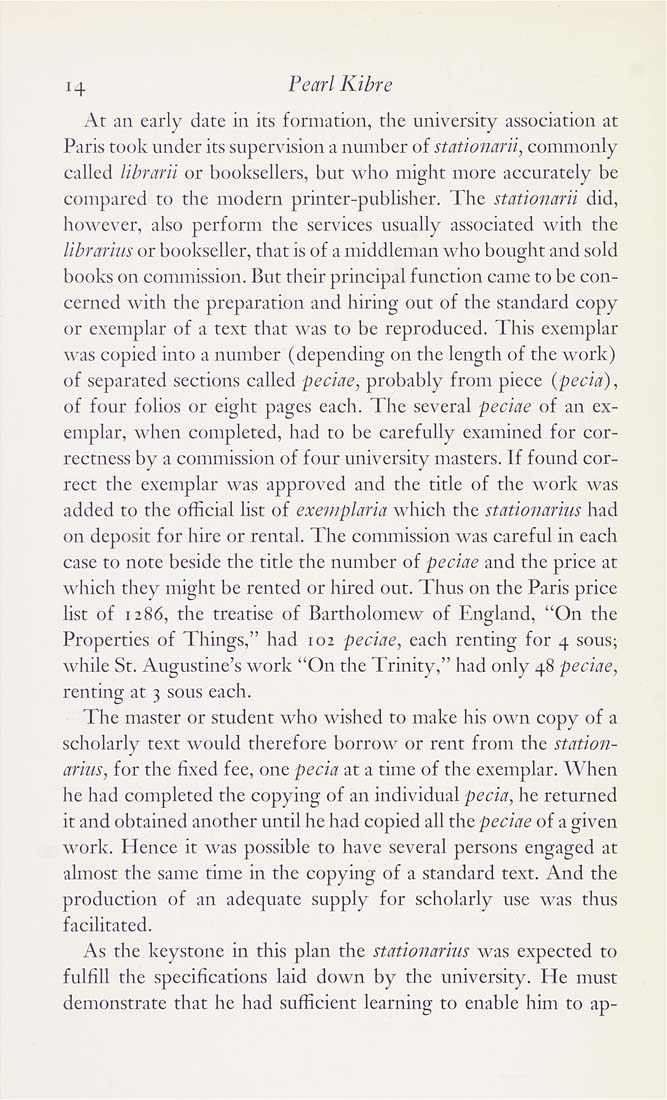Columbia Library columns (v.4(1954Nov-1955May))
(New York : Friends of the Columbia Libraries. )
|
||
|
|
|
|
| v.4,no.1(1954:Nov): Page 14 |

14 Pearl Kibre At an early date in its formation, the university association at Paris took under its supervision a number of stationarii, commonly called librarii or booksellers, but who might more accurately be compared to the modern printer-publisher. The stationarii did, however, also perform the services usually associated with the librarius or bookseller, that is of a middleman who bought and sold books on commission. But their principal function came to be con¬ cerned with the preparation and hiring out of the standard copy or exemplar of a text that was to be reproduced. This exemplar ^^'as copied into a number (depending on the length of the work) of separated sections called peciae, probably from piece (pecia), of four folios or eight pages each. The several peciae of an ex¬ emplar, when completed, had to be carefully examined for cor¬ rectness by a commission of four university masters. If found cor¬ rect the exemplar was approved and the title of the work was added to the official list of exemplaria which the stationarius had on deposit for hire or rental. The commission was careful in each case to note beside the title the number of peciae and the price at which they might be rented or hired out. Thus on the Paris price list of 1286, the treatise of Bartholomew of England, "On the Properties of Things," had 102 peciae, each renting for 4 sous; while St. Augustine's work "On the Trinity," had only 48 peciae, renting at 3 sous each. The master or student who wished to make his own copy of a scholarly text would therefore borrow or rent from the station¬ arius, for the fixed fee, one pecia at a time of the exemplar. When he had completed the copying of an individual pecia, he returned it and obtained another until he had copied all the peciae of a given work. Hence it was possible to have several persons engaged at almost the same time in the copying of a standard text. And the production of an adequate supply for scholarly use was thus facihtated. As the keystone in this plan the stationarius was expected to fulfill the specifications laid down by the university. He must demonstrate that he had sufficient learning to enable him to ap- |
| v.4,no.1(1954:Nov): Page 14 |







